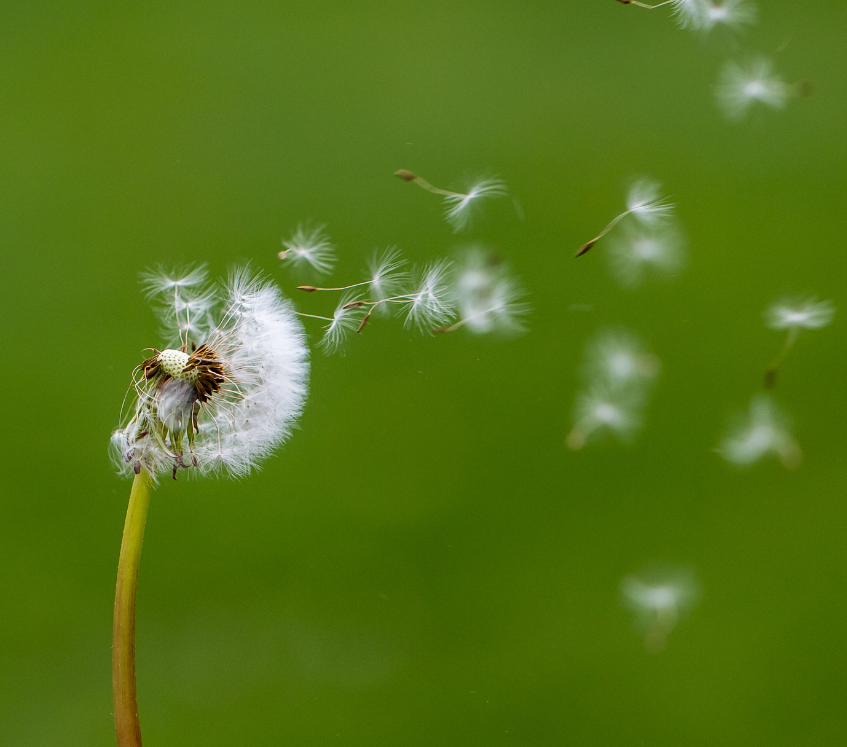Plants are so widespread in natural places that it’s easy to overlook them. Almost everywhere you go at certain times of year, the plants form a wall of green. But how do plants find their habitats in the first place? After all, they can’t move around on their own like animals. In this Deep Stuff blog post, let’s explore seed dispersal: how plants get their seeds to places where they can grow.
Why do plants need seed dispersal?
Although it might be obvious to botanists and other plant experts, it can be hard to imagine why plants need to “move around”. Just like with animals, there are a whole bunch of reasons:
- Finding new habitats where resources like light, water, or nutrients are more abundant
- Avoiding predators, parasites, or competitors in crowded areas
- Keeping up with changing conditions like warmer climates, floods, or wildfires
- To ensure that their offspring can thrive
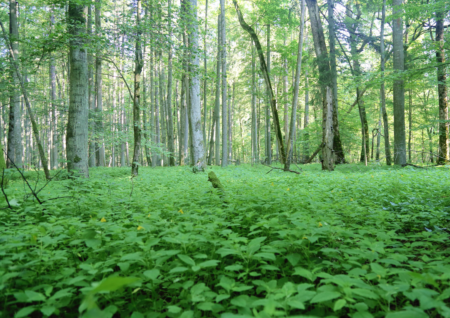
Like all other living things, plants need to find and stay inside of their habitat. In other words, they need to make sure that they are hanging out in places where they can survive. Specifically, this means places where they can feed themselves, grow, and reproduce. Furthermore, those places need to have conditions that the species can tolerate.
Finding the right habitat
For example, most tropical orchids can’t survive in a dry desert. On the other hand, desert-adapted cacti would quickly die off in a waterlogged marsh. As conditions change in the landscape around them, or as good habitat become crowded, populations of plants need to move into new areas. This ensures that individuals thrive and that populations don’t go extinct.
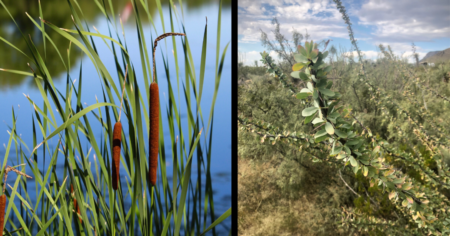
Why seeds?
So if plants need to move around just like animals do, why should seeds do the moving? Well, for starters, adult plants are rooted into the ground. While some, including many invasive species can “move” by spreading suckers or horizontal roots or stalks along the ground, many cannot.
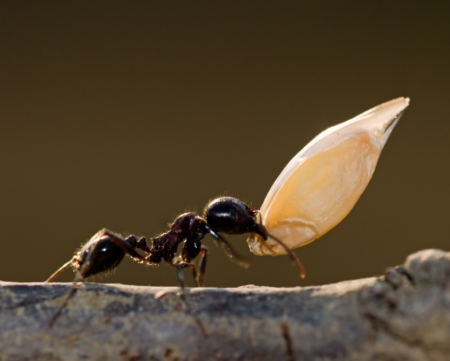
However, seeds don’t have roots. These baby plants are more or less portable, and almost always much smaller than an adult plant. Seeds are also protected; they often have coatings or shells to keep them safe from predators. That’s the perfect recipe for travel!
When a plant produces seeds, those seeds are its offspring. In other words, you can think of them like a wolf’s pups or a robin‘s eggs. Just like any other parent, plants want to look out for their “babies”. If all of their babies stayed close to home, their habitat would quickly become too crowded. So, seed dispersal helps plan seeds strike out on their own to find good habitat.
How do plants disperse their seeds?
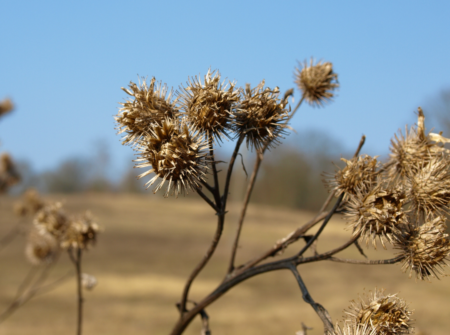
I’m sure you can see one big problem here: seeds still can’t move on their own! And that’s absolutely true. The key part of that phrase is “on their own”. While plant seeds can’t really move themselves, they are certainly great at getting other things to do the moving for them.
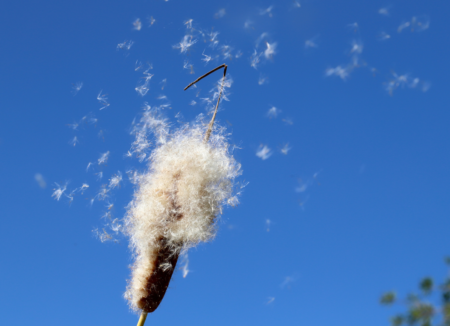
Here are just a few examples of the many ways seeds get around:
- Floating on ocean currents (Coconuts)
- Attaching to animal fur or skin (Cockleburrs, Beggar’s ticks, Goosegrass or Bedstraw)
- Getting eaten by an animal, then pooped out somewhere else (Berries, like mistletoe)
- Flying on the wind (Maple trees, Dandelions)
- Exploding under pressure (Witchhazel, Bittercress, )
- Burying and hoarding by animals (Oak acorns, some pines)
Seed “dances”
Scientists and naturalists often use technical words to describe these ingenious methods of seed dispersal. For example, moving via animals (by sticking to them or passing through their gut) is endozoochory. Meanwhile, anemochory describes movement aided by wind currents.
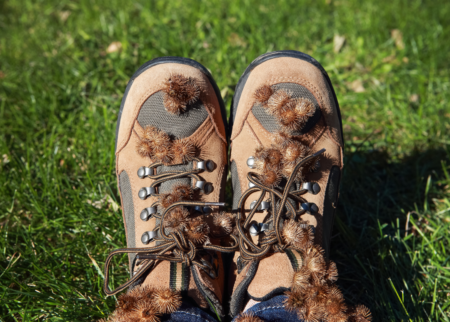
The many different kinds of seed dances fall into two categories:
- Biotic, which involve living things (mostly animals)
- Abiotic, which involve wind, water, or other non-living aspects of the environment
All of these words contain “-chory”, which shares a linguistic root with the word “choreography”. While the ancient Greek word khoreo can mean “to move” or “to spread”, you can think of these methods as seed-dances. Some seeds dance with animals, some seeds dance using gravity. Other seeds dance with the ocean, or the winds. These beautiful dances get them where they need to go.
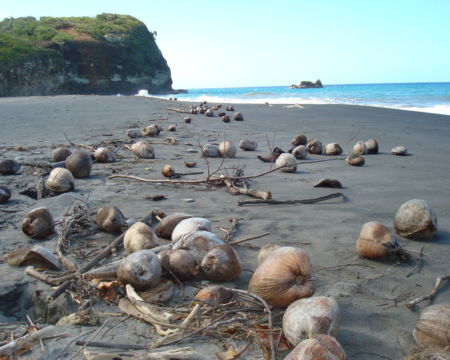
Here are some more great names for modes of seed dispersal:
- Ballistic – Explosive seed dispersal
- Myrmecochory – Dispersal via ants carrying and moving seeds
- Dyszoochory – When scatter-hoarding animals like squirrels hide seeds and forget some of them
- Hydrochory – Movement via water currents
- Chiropterochory – Transport by bats
- Barochory – Falling because of gravity
- Herpochory – Seed “crawling” by means of little hairs that change position with changes in humidity
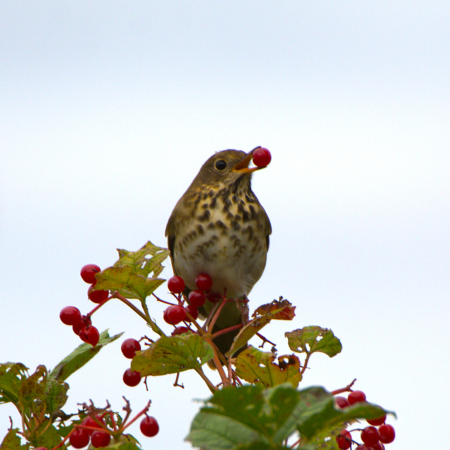
Further listening
If you’d like to learn more about seed dispersal, check out the Nature Guys episode “Seeds on the Move” to hear plant guru Greg Torres‘ take on the subject.
Thanks for reading about seed dispersal!
Do you have a favorite plant-dance? Are you curious about how other plants move their seeds? Let us know in the comments! If you’ve got other topics that you think deserve a deep-dive, shoot me a message using the Contact page. Until next time!

